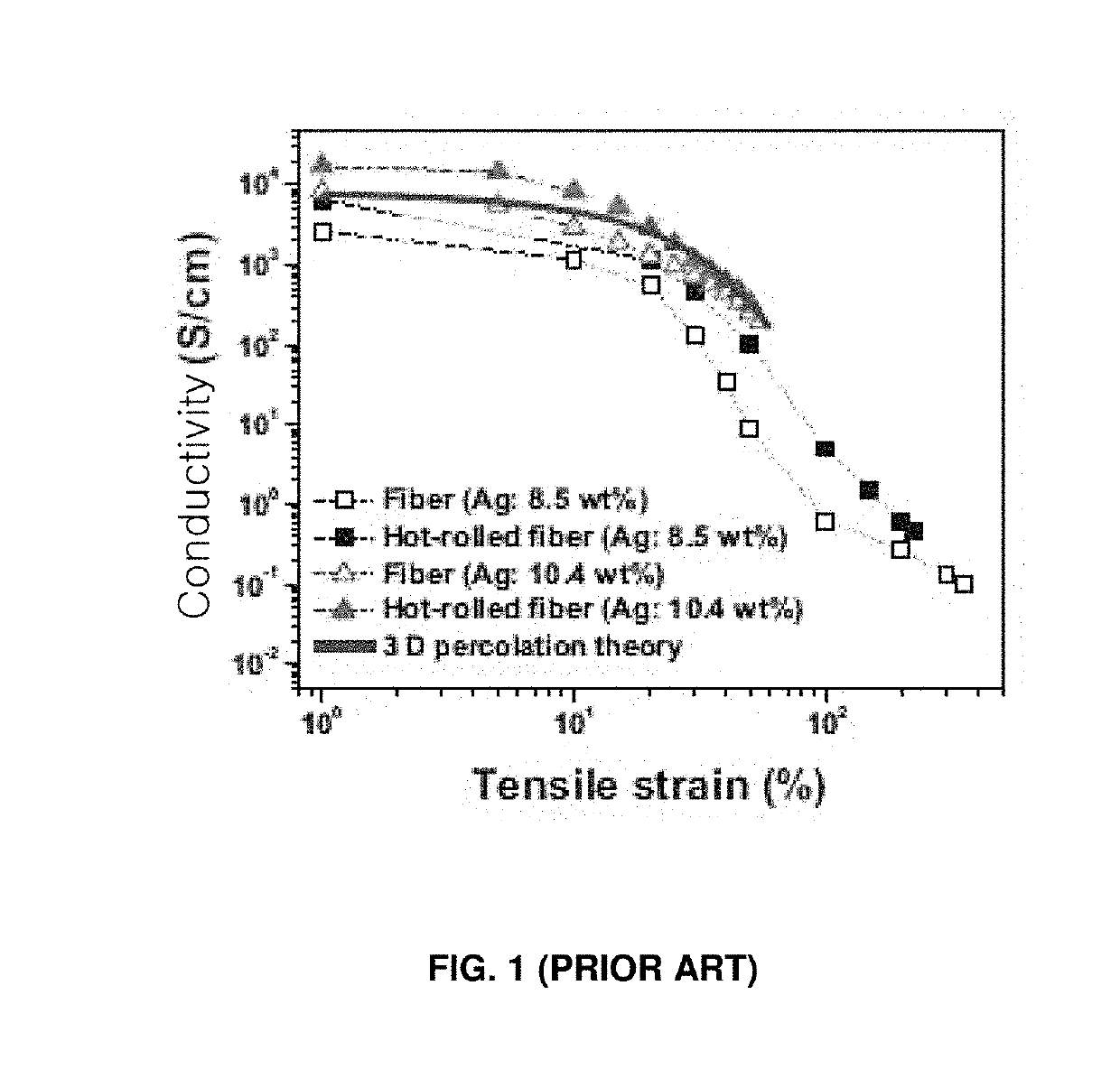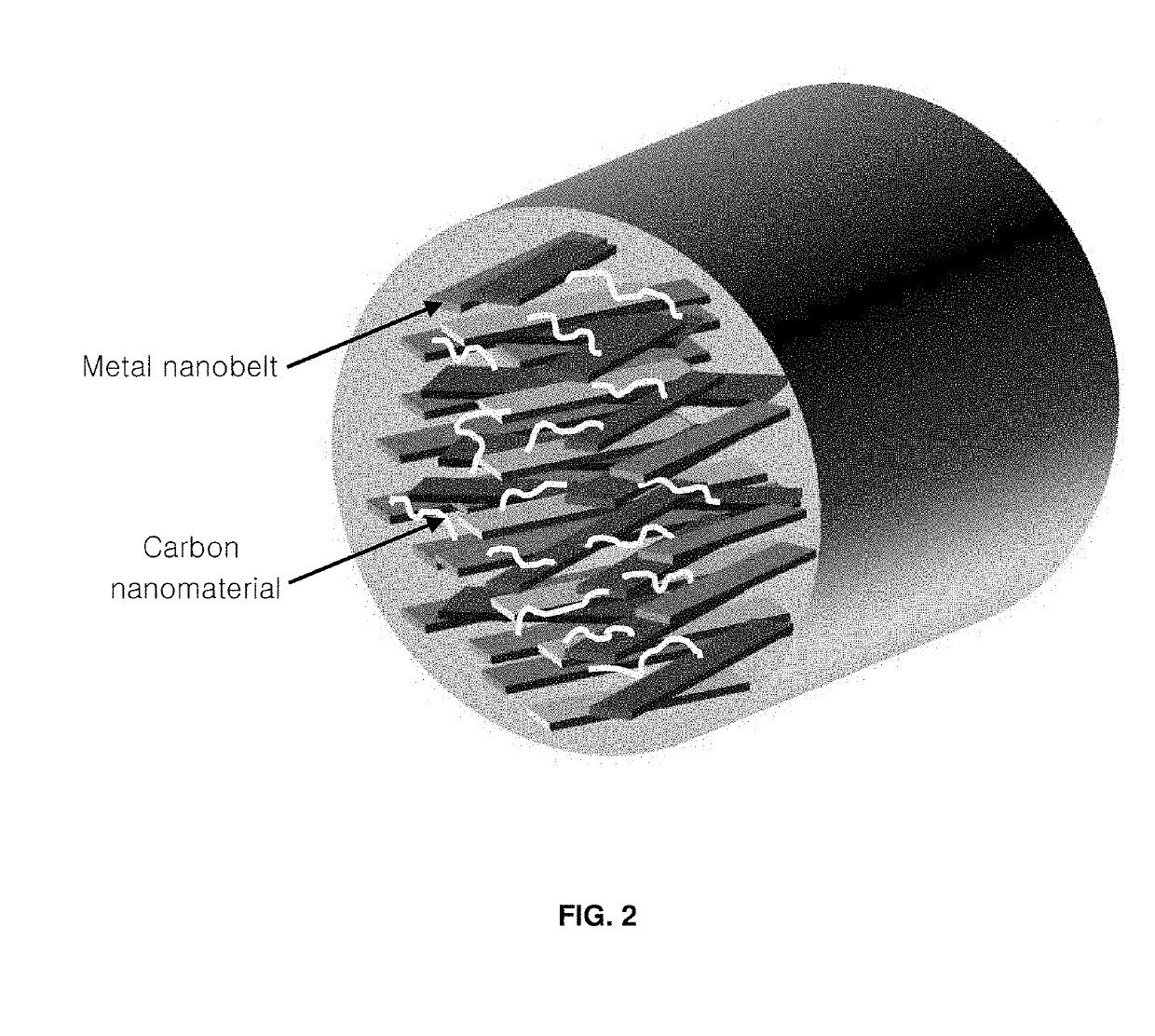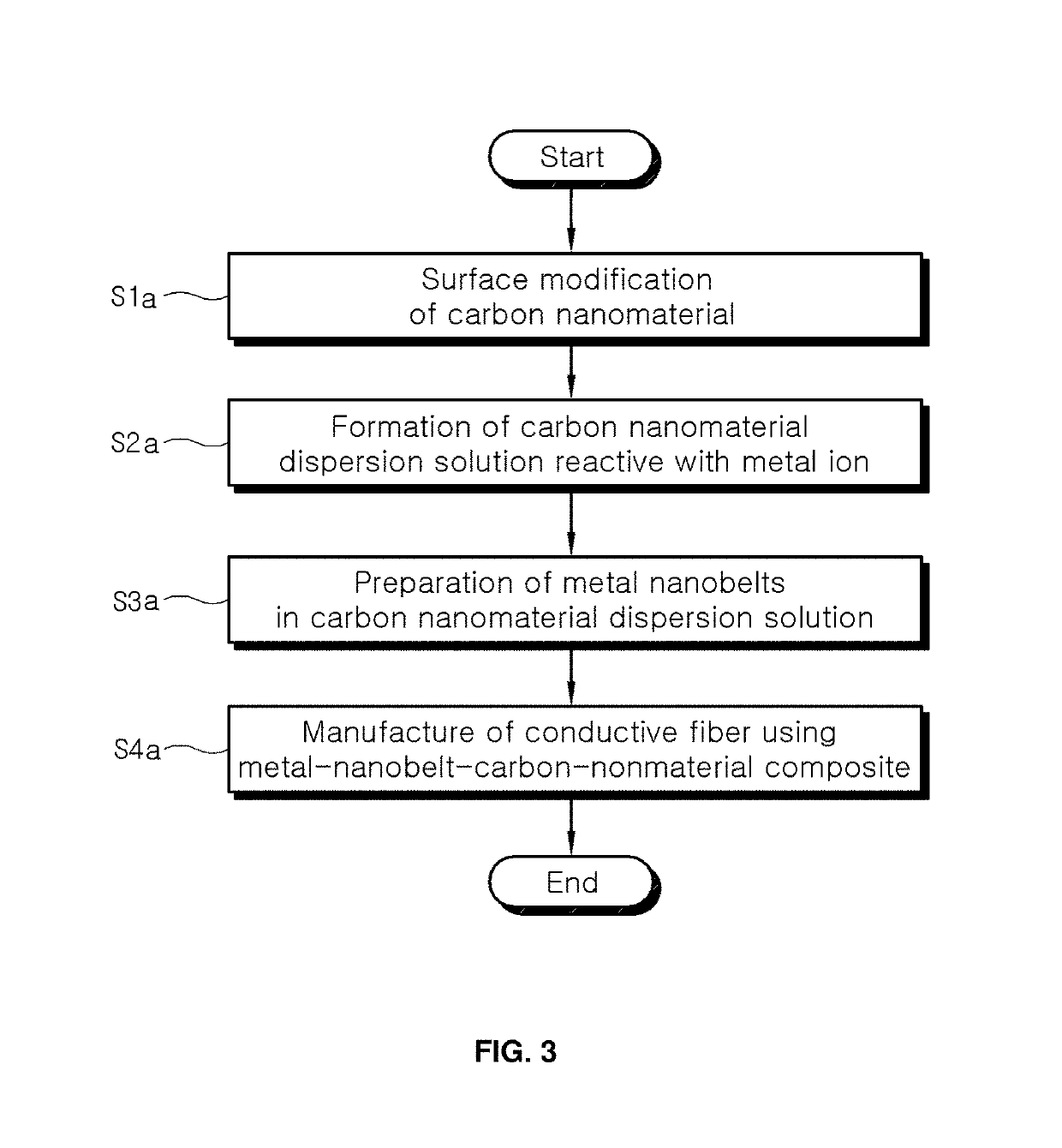Conductive fiber comprising metal nanobelt and carbon nanomaterial composite, method for producing conductive fiber, fibrous strain sensor, and method for producing fibrous strain sensor
a technology of carbon nanomaterials and conductive fibers, which is applied in the direction of non-conductive materials with dispersed conductive materials, chemistry apparatuses and processes, and materials nanotechnology. it can solve the problems of difficult mass production, difficult to realize high conductivity of 10sup>5 /sup>s/m or more using only carbon nanomaterials, and achieve superior dispersion uniformity, increase the conductivity of conductive fibers, and improve the effect of resistan
- Summary
- Abstract
- Description
- Claims
- Application Information
AI Technical Summary
Benefits of technology
Problems solved by technology
Method used
Image
Examples
Embodiment Construction
[0045]Hereinafter, a detailed description will be given of a conductive fiber comprising a metal-nanobelt-carbon-nanomaterial composite, a method of manufacturing the conductive fiber, a fibrous strain sensor and a method of manufacturing the fibrous strain sensor according to embodiments of the present invention. Here, the term “metal nanobelt” refers to one having a ribbon shape so as to enable area contact. The conductive fiber is preferably manufactured in a manner in which a surface-modified carbon nanomaterial is mixed and reacted with an isocyanate-based compound and a pyrimidine-based compound to yield a carbon nanomaterial dispersion solution reactive with metal ions, and a metal salt precursor and a solvent are added to the carbon nanomaterial dispersion solution and a reducing agent is added at a controlled addition rate to thus form the metal nanobelts on the surface of the carbon nanomaterial, after which the resulting carbon-nanomaterial-metal-nanobelt composite is mix...
PUM
| Property | Measurement | Unit |
|---|---|---|
| tensile strain | aaaaa | aaaaa |
| conductivity | aaaaa | aaaaa |
| electrical conductivity | aaaaa | aaaaa |
Abstract
Description
Claims
Application Information
 Login to View More
Login to View More - R&D
- Intellectual Property
- Life Sciences
- Materials
- Tech Scout
- Unparalleled Data Quality
- Higher Quality Content
- 60% Fewer Hallucinations
Browse by: Latest US Patents, China's latest patents, Technical Efficacy Thesaurus, Application Domain, Technology Topic, Popular Technical Reports.
© 2025 PatSnap. All rights reserved.Legal|Privacy policy|Modern Slavery Act Transparency Statement|Sitemap|About US| Contact US: help@patsnap.com



